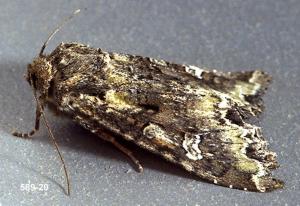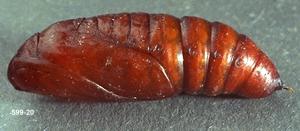|
Bertha Armyworm |
|||||||||
Contents Identification Fact Sheet (requires Acrobat Reader 3.x or above to read and print. Click below to download the free "Reader".) |
This section contains information on the management of bertha armyworm in peppermint. The Fact Sheet contains specific information on identifcation and biology of this pest (requires Acrobat Reader). Bertha armyworm often occurs during the same period as variegated cutworm and beet armyworm. Refer to information on these two insects for management of bertha armyworm.
|



